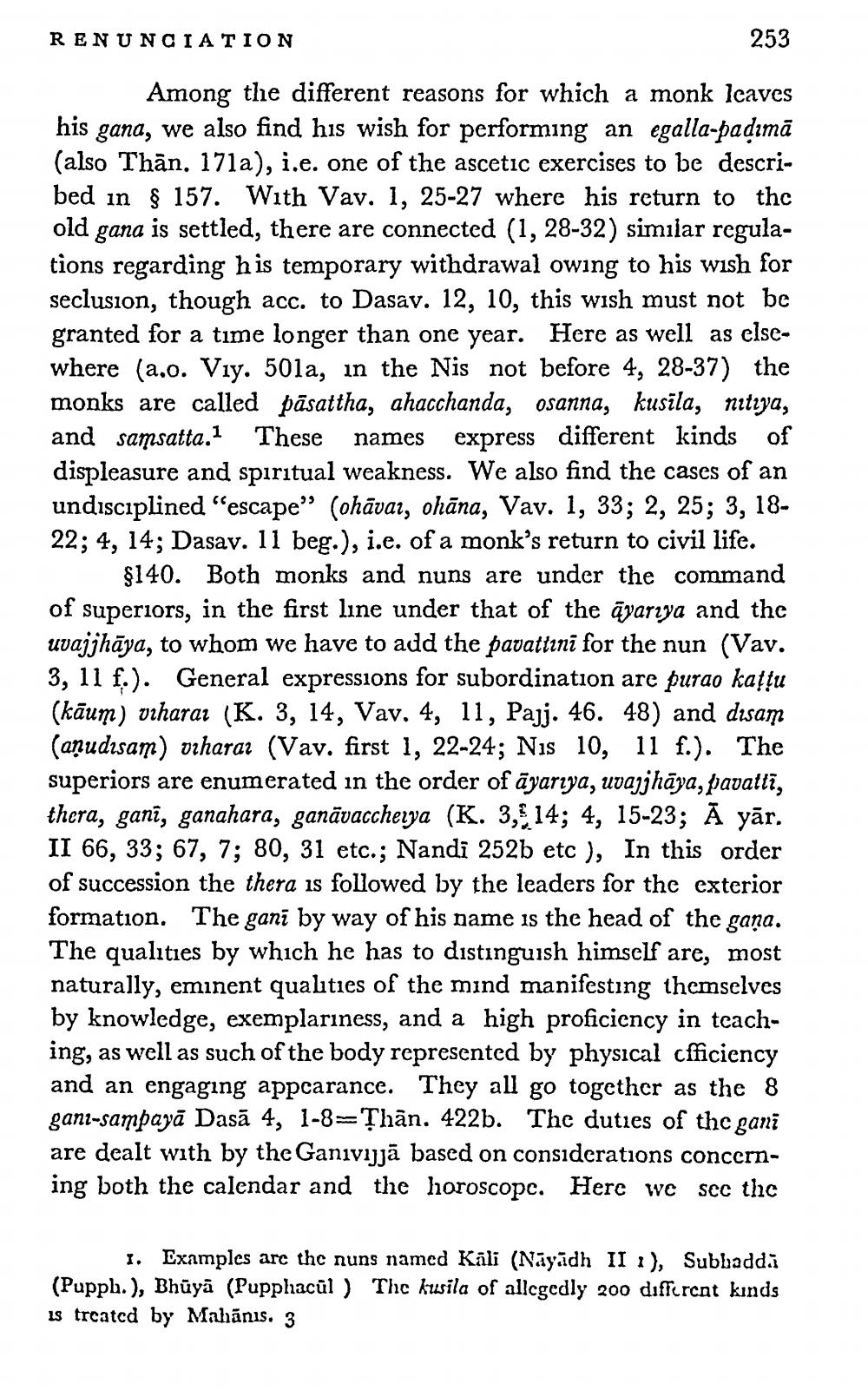________________
RENUNCIATION
253
Among the different reasons for which a monk leaves his gana, we also find his wish for performing an egalla-padımā (also Thān. 171a), i.e. one of the ascetic exercises to be described in § 157. With Vav. 1, 25-27 where his return to the old gana is settled, there are connected (1, 28-32) similar regulations regarding his temporary withdrawal owing to his wish for seclusion, though acc. to Dasav. 12, 10, this wish must not be granted for a time longer than one year. Here as well as elsewhere (a.o. Viy. 501a, in the Nis not before 4, 28-37) the monks are called pāsattha, ahacchanda, osanna, kusila, nitiya, and samsatta.1 These names express different kinds of displeasure and spiritual weakness. We also find the cases of an undisciplined "escape” (ohāvar, ohāna, Vav. 1, 33; 2, 25; 3, 1822; 4, 14; Dasav. 11 beg.), i.e. of a monk's return to civil life.
$140. Both monks and nuns are under the command of superiors, in the first line under that of the āyarıya and the uvajjhāya, to whom we have to add the pavattini for the nun (Vav. 3, 11 f.). General expressions for subordination are purao kaļļu (kāum) viharai (K. 3, 14, Vav. 4, 11, Pajj. 46. 48) and disam (anudisam) viharai (Vav. first 1, 22-24; Nis 10, 11 f.). The superiors are enumerated in the order of āyarıya, uvajjhāya, pavalli, thera, ganī, ganahara, ganāvaccherya (K. 3, 14; 4, 15-23; À yār. II 66, 33; 67, 7; 80, 31 etc.; Nandi 252b etc ), In this order of succession the thera is followed by the leaders for the exterior formation. The gani by way of his name is the head of the gana. The qualities by which he has to distinguish himself are, most naturally, eminent qualities of the mind manifesting themselves by knowledge, exemplariness, and a high proficiency in teaching, as well as such of the body represented by physical cfficiency and an engaging appcarance. They all go together as the 8 ganz-sampayā Dasā 4, 1-8=Țhān. 422b. The duties of the gani are dealt with by the Ganivijā based on considerations concerning both the calendar and the horoscope. Here we see the
1. Examples are the nuns named Kali (Nāyādh II 1), Subhadda (Pupph. ), Bhūyā (Pupphacũl ) Thc kusila of allegedly 200 different kinds is trcatcd by Mahānis. 3




